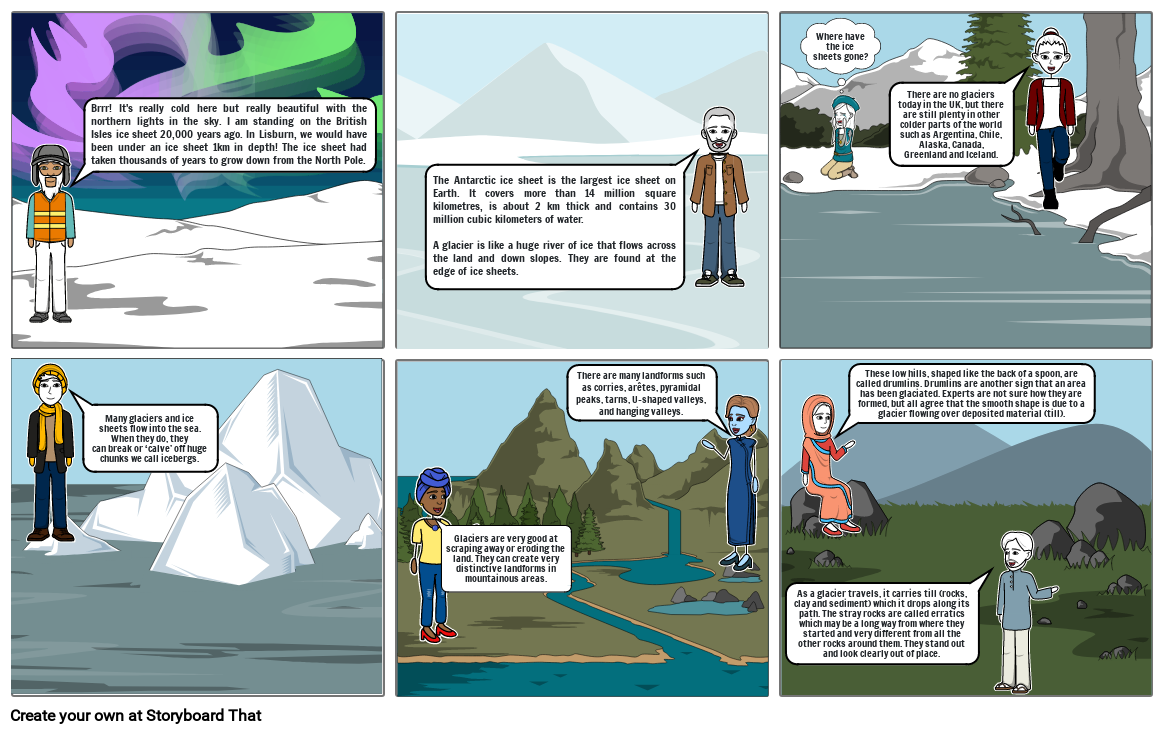Glacial Storyboard!

Storyboard Text
- Brrr! It's really cold here but really beautiful with the northern lights in the sky. I am standing on the British Isles ice sheet 20,000 years ago. In Lisburn, we would have been under an ice sheet 1km in depth! The ice sheet had taken thousands of years to grow down from the North Pole.
- The Antarctic ice sheet is the largest ice sheet on Earth. It covers more than 14 million square kilometres, is about 2 km thick and contains 30 million cubic kilometers of water.A glacier is like a huge river of ice that flows across the land and down slopes. They are found at the edge of ice sheets.
- Where have the ice sheets gone?
- There are no glaciers today in the UK, but there are still plenty in other colder parts of the world such as Argentina, Chile, Alaska, Canada, Greenland and Iceland.
- Many glaciers and ice sheets flow into the sea. When they do, theycan break or ‘calve’ off huge chunks we call icebergs.
- Glaciers are very good at scraping away or eroding the land. They can create very distinctive landforms in mountainous areas.
- There are many landforms such as corries, arêtes, pyramidal peaks, tarns, U-shaped valleys, and hanging valleys.
- As a glacier travels, it carries till (rocks, clay and sediment) which it drops along its path. The stray rocks are called erratics which may be a long way from where they started and very different from all the other rocks around them. They stand out and look clearly out of place.
- These low hills, shaped like the back of a spoon, are called drumlins. Drumlins are another sign that an area has been glaciated. Experts are not sure how they are formed, but all agree that the smooth shape is due to a glacier flowing over deposited material (till).
Over 30 Million Storyboards Created

